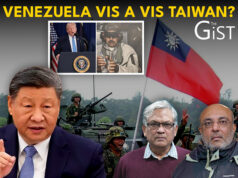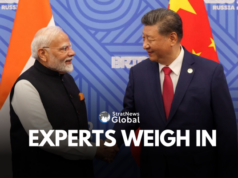How does the uncertainty in neighbouring Bangladesh impact bilateral trade and connectivity between the two nations?
Should India worry about losing transit rights through Bangladesh? Like the latest Akhaura-Agartala cross-border rail link, which cuts travel time between Agartala and Kolkata from 31 hours to 10?
Given the apparently rising anti-India sentiment in Bangladesh, particularly over New Delhi giving refuge to Prime Minister Sheikh Hasina, what are the options before New Delhi and Dhaka? What is the controversy over the Adani-Bangladesh deal power supply deal? What does a Trump White House mean for both nations?
Those were some of the questions we asked Dr Jayant Dasgupta, who’s served as India’s permanent representative to the World Trade Organisation and as Secretary, Economic Advisory Council to the Prime Minister, apart from other senior roles both in the government and the private sector.
New Delhi so far has made it clear that it would not let a “single issue” disrupt the relationship, and has pointed to the launch of 40 MW power transmission from Nepal to Bangladesh through the Indian grid, and the upgrading of infrastructure at the Petrapole-Benapole Integrated Check Post over the past month as evidence.
In this interview to The Gist, Dr Dasgupta decodes the dynamics at play and explains why regardless of who is in power in Bangladesh, trade and transit agreements are unlikely to be totally severed.
Here’s some interesting observations that he makes:
‘Bangladesh is hugely dependent on imports from India, for a variety of reasons. It has more than a 4,000 km land border on all sides with us.’
‘Bangladesh is the second largest garment exporter in the world, and it manufactures about 95% of the fabrics domestically, for which it requires a lot of cotton.
Raw cotton accounts for USD 1 billion out of the $11.6 billion worth of Indian exports to Bangladesh.
China is the largest producer of cotton in the world, but it exports zero cotton.
Mineral oils and it byproducts account for another $1.9 billion worth, and these are the two major things Bangladesh imports from India, apart from food items.
Replacing these imports from any other nation, like Pakistan or China, would be difficult and costly.
As for power, Adani is a private company, and cannot continue providing power (to Bangladesh) for very long, without its bills getting paid.
PTC India, (earlier known as Power Trading Corporation of India) also has an outstanding amount of 800 crores due from Bangladesh.
Bangladesh has a Forex crisis, and both these (with Adani and PTC) deals are dollar denominated.
India from the 15th of November allowed cheaper hydel power from Nepal to cross through the Indian grid into Bangladesh.
On connectivity and transit rights, Dr Dasgupta feels the projects that are totally funded by India would continue, but those that require some funding from Bangladesh might be hit, due to country’s financial problems.
A Trump White House might not be pleasant for Mohammad Yunus, given Yunus is ‘a strong avowed supporter of Hillary Clinton,’ the Democratic nominee Trump defeated in 2016 to become President.
For more such fascinating insights into the relationship, including the role other stakeholders like Pakistan, China and allegedly the Clintons, watch the full interview.
In a career spanning three decades and counting, Ramananda (Ram to his friends) has been the foreign editor of The Telegraph, Outlook Magazine and the New Indian Express. He helped set up rediff.com’s editorial operations in San Jose and New York, helmed sify.com, and was the founder editor of India.com.
His work has featured in national and international publications like the Al Jazeera Centre for Studies, Global Times and Ashahi Shimbun. But his one constant over all these years, he says, has been the attempt to understand rising India’s place in the world.
He can rustle up a mean salad, his oil-less pepper chicken is to die for, and all it takes is some beer and rhythm and blues to rock his soul.
Talk to him about foreign and strategic affairs, media, South Asia, China, and of course India.




